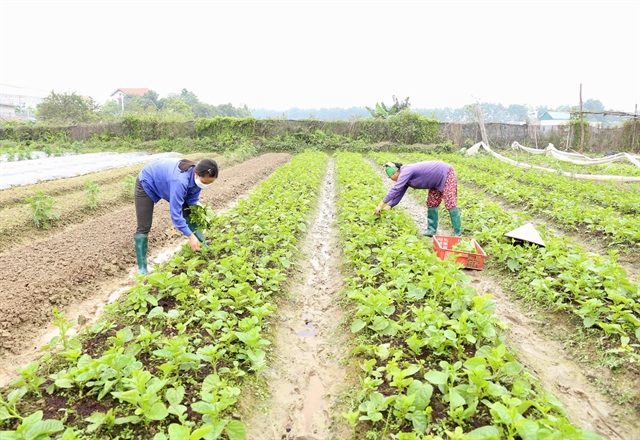 Society
Society

Tạ Văn Trường, deputy director of the Hà Nội Department of Agriculture and Rural Development, talks to Hà Nội Mới (New Hà Nội) newspaper on the development of origin tracing and authenticity of agriculture products in Hà Nội

|
| Farmers of Thanh Xuân Organic Vegetable Cooperative in Hà Nội's Sóc Sơn District are harvesting safe vegetables to supply to the capital city's market. — VNA/VNS Photo |
Tạ Văn Trường, deputy director of the Hà Nội Department of Agriculture and Rural Development, talks to Hà Nội Mới (New Hà Nội) newspaper on the development of origin tracing and authenticity of agriculture products in Hà Nội
What achievements has Hà Nội gained in tracing the origin of products?
A system to trace the origin of agro-forestry and fishery products in Hà Nội has been completed following more than two years of development. The achievement came from hard work and co-operation between the Hà Nội agriculture sector and the Integrated Development Enterprises (IDE) - a member of the Association of Việt Nam Small and Medium Enterprises. The system has been used as an effective tool to trace the origins of many agriculture, forestry, fishery products which are produced by almost 2,800 co-operatives and production establishments in Hà Nội.
In the near future, the system will be used in all 30 districts in Hà Nội.
Will you please talk a bit more about the system to trace product origins?
The system to trace back the agro-forestry and fishery product origins has helped enterprises and consumers stop the circulation of ingredients of unknown origin in food and foodstuff in the market. According to a recent survey, certified safe agricultural products have gained between 10-30 per cent in value in comparison with traditional products.
Furthermore, buyers can use their smartphones to retrieve the products’ origins.
What are the challenges the system has faced?
Right now agriculture production in Việt Nam and in Hà Nội, in particular, is small and scattered, so the labels and stamps on goods provide only basic details sometimes without updated information. The number of products with sufficient stamps and labels are also quite low compared to what is currently available on the market and the demand from the consumers. Farmers also usually jot down progress of their cultivation or farming on paper diaries first before inputting them into digital systems, so cooperatives and businesses might face some difficulties in making sure that the information they get from their farmer employees is in line with regulations.
We hope, in the near future, this problem will be solved.
According to a plan, by late 2020 QR codes will be applied for all safe food and agricultural products in Hà Nội. Do you think the plan is feasible?
Hà Nội authorities have set a target by late 2020, QR codes will be used to help consumers check if a product is safe to eat.
Of course, to achieve this target, it needs good co-operation between the farmers, enterprises and agencies throughout the course of production, processing and consumption of the products.
QR codes will help buyers retrieve all information about the products.
We hope in the near future, Hà Nội and other cities and provinces nationwide will quickly develop an electronic market (chonhaminh.gov.vn) to advertise a chain of safe agriculture products in all localities in Việt Nam. — VNS




